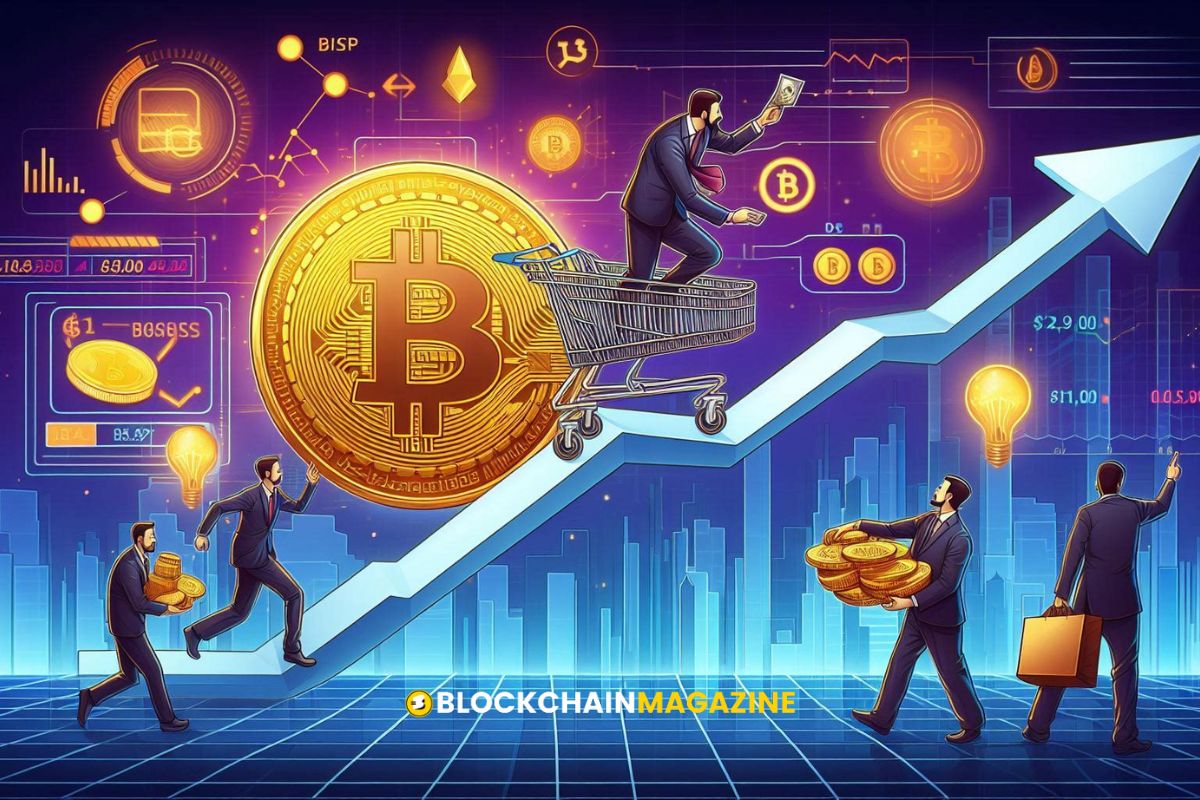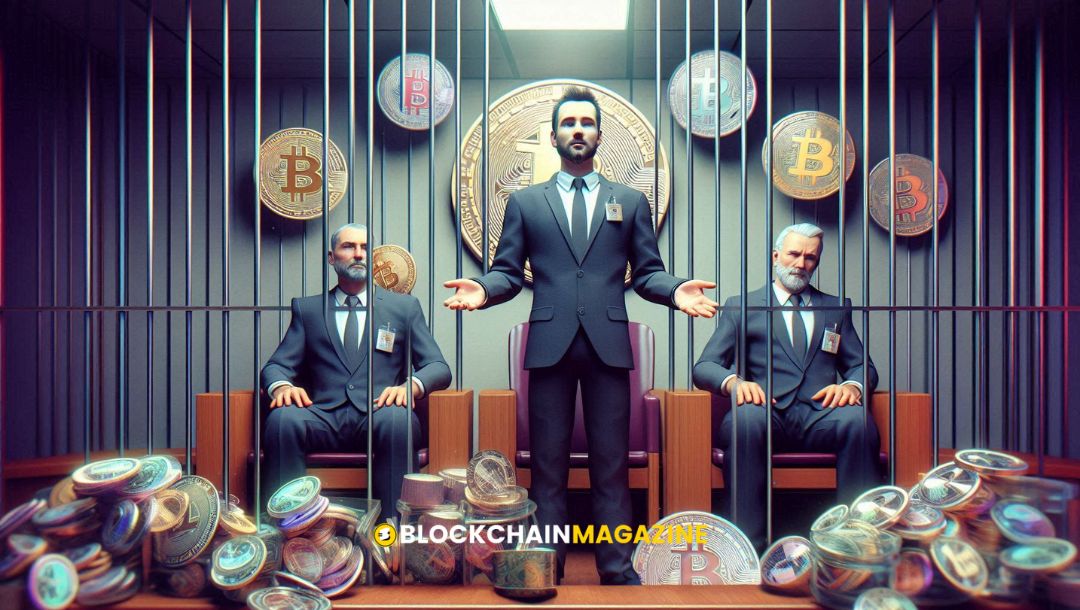Solana Network Achieves New Milestone with 100 Million Transactions
Solana’s been making waves in the crypto world lately, hitting a jaw-dropping 100 million transactions. This blockchain is proving it’s not just about speed, but also about sheer volume. As more people jump on the Solana train, it’s clear that this network is growing at an impressive pace. Let’s dive into some of the key takeaways from this milestone and see what it means for the future of Solana.
Key Takeaways
- Solana hits a new milestone with 100 million transactions, showcasing its rapid growth.
- The network’s scalability is a major factor in handling high transaction volumes efficiently.
- NFTs are playing a big role in boosting Solana’s transaction numbers.
- Solana’s technological innovations like Proof of History are key to its success.
- Despite challenges, Solana’s future looks promising with continued growth and innovation.
Solana’s Record-Breaking Transaction Milestone
Understanding the 100 Million Transaction Achievement
Solana recently hit a massive milestone, processing over 100 million transactions. This isn’t just a number—it’s a testament to the network’s ability to handle high demand. Solana’s scalability has been a game-changer, allowing it to support a massive volume of transactions without breaking a sweat. This achievement underscores Solana’s position as a major player in the blockchain space, consistently outperforming many of its rivals in terms of transaction throughput.
Comparing Solana’s Growth to Other Blockchains
In the blockchain world, numbers speak volumes. Solana’s growth is nothing short of remarkable when compared to its peers. While many blockchains struggle to handle a few million transactions daily, Solana’s infrastructure supports tens of millions. This growth trajectory is not just about raw numbers; it’s about creating a reliable, fast, and efficient network that attracts developers and users alike. Solana’s ability to maintain low fees and quick transaction times even as it scales is a significant factor in its rising popularity.
The Role of NFTs in Solana’s Transaction Surge
NFTs have played a crucial role in boosting Solana’s transaction numbers. The network’s low fees and quick processing times have made it a favorite for NFT creators and collectors. Projects like the Pudgy Penguins have driven significant traffic to the network, contributing to the surge in transactions. The ease of minting and trading NFTs on Solana has not only increased transaction volume but has also broadened the appeal of the blockchain to new user segments, further cementing its place in the crypto ecosystem.
The Impact of Solana’s High Transaction Volume
How Solana’s Scalability Supports High Volume
Solana’s architecture is designed to handle a massive number of transactions. This scalability is a big reason why it can manage such high volumes. Its unique Proof of History mechanism allows for faster processing times, ensuring that transactions are recorded in a timely manner. This means that even during peak times, Solana can keep up with demand without a hitch. This capability sets Solana apart from many other blockchains, which often struggle with congestion and delays.
Implications for Decentralized Finance (DeFi)
With its ability to process transactions quickly and efficiently, Solana offers a robust platform for DeFi applications. This is crucial for DeFi, where speed and reliability are key. Users can trade, lend, and borrow assets with minimal wait times, making the experience smoother and more attractive. The high transaction volume also means more liquidity is available, which is essential for the growth of DeFi projects on Solana.
User Engagement and Network Activity
The high transaction volume on Solana is not just a technical achievement; it reflects the network’s active user base. More transactions mean more users are engaging with the platform, whether through trading, gaming, or other decentralized applications. This level of activity is a good indicator of Solana’s popularity and its ability to attract and retain users. It’s a cycle: more activity leads to more interest, which in turn leads to even more activity. This dynamic has been key to Solana’s rapid rise in the blockchain world.
Solana’s Technological Innovations Driving Success
Exploring Solana’s Proof of History Mechanism
Solana’s unique Proof of History (PoH) mechanism is a game-changer in the blockchain world. Unlike traditional consensus methods, PoH introduces a cryptographic clock that timestamps transactions, allowing nodes to agree on the order of events without constant communication. This approach tackles a major bottleneck faced by other blockchains, where reaching consensus can slow down as the network grows. By integrating PoH with Proof of Stake (PoS), Solana achieves high throughput, processing tens of thousands of transactions per second with minimal fees. This efficiency is crucial in a space where speed and cost are paramount.
The Role of Tower BFT and Pipelining
Tower BFT is another key innovation in Solana’s architecture. It’s an optimized version of the Practical Byzantine Fault Tolerance (PBFT) consensus protocol, tailored for the PoH environment. This ensures fast and secure consensus, even as the network scales. Additionally, Solana employs a technique called Pipelining, which streamlines transaction processing by breaking down the validation process into smaller, manageable tasks. This optimizes resource usage and enhances overall network performance.
How Turbine Enhances Block Propagation
Turbine is Solana’s secret weapon for efficient block propagation. It breaks data into smaller packets, similar to how BitTorrent works, and distributes them across the network. This reduces the amount of bandwidth required for nodes to communicate, speeding up the process of reaching consensus. By ensuring that data can be quickly and reliably shared among nodes, Turbine plays a vital role in maintaining Solana’s high-speed, low-latency transaction environment.
Solana’s innovative approach to blockchain technology sets it apart in a crowded field. With its unique consensus mechanisms and cutting-edge protocols, Solana not only addresses existing challenges but also sets new standards for what a blockchain can achieve. As the network continues to grow and evolve, these technological foundations will support its journey toward becoming a cornerstone of the digital economy.
Market Reactions to Solana’s Milestone
Solana’s Price Surge and Market Position
Solana has been on quite a ride lately, with its price jumping significantly. As of early 2025, Solana’s price has soared by 43.18% over the past month, nearly reaching the $300 mark. This surge is largely due to its technological advancements and increased transaction capacity. It’s fascinating to see how Solana’s market position has evolved so rapidly. In fact, Solana managed to overtake BNB to become the fourth-largest crypto asset by market value. This kind of growth is rare and shows the market’s confidence in Solana’s potential.
Institutional Interest in Solana’s Ecosystem
Institutional players are also taking note of Solana’s rise. Solana’s ecosystem has seen a surge in institutional investment, with many projects raising substantial funds. In Q3 2024, 29 Solana-based DApps raised $173 million, marking a 54% increase from the previous quarter. This kind of institutional support is a big deal. It suggests that traditional finance sees long-term potential in Solana’s blockchain.
The Influence of Memecoins on Solana’s Popularity
You can’t talk about Solana’s recent success without mentioning memecoins. The memecoin frenzy has been a significant driver of activity on Solana’s network. This trend has attracted a lot of attention, and while some might view memecoins as volatile, they’ve undeniably boosted Solana’s popularity. The ongoing memecoin supercycle has positioned Solana-based memecoins as top investment choices. It’s a wild ride, but one that’s paying off for Solana in terms of visibility and user engagement.
Challenges and Criticisms Facing Solana
Addressing Network Outages and Reliability Issues
Solana has faced its share of technical hiccups. Since its inception, the network has experienced several outages, sometimes lasting for hours or even days. These disruptions, often triggered by high transaction volumes or technical glitches, have raised eyebrows about the network’s reliability. Frequent outages can erode trust, especially among developers and users who rely on uninterrupted service for their applications. Solana’s centralized approach in handling these issues has been a double-edged sword. While some appreciate the quick fixes, others argue it compromises the decentralization ethos.
Centralization Concerns and Their Impact
Centralization is a hot topic in the blockchain world, and Solana isn’t immune to criticism here. The network’s design prioritizes speed and efficiency, but this comes at a cost: decentralization. Critics argue that Solana’s model leaves it vulnerable to control by a few entities, potentially undermining the principles of blockchain technology. Censorship resistance is often cited as a key benefit of decentralization, and Solana’s perceived lack of it raises concerns about security and fairness.
Community Perception and Criticism
The community’s view of Solana is mixed. Some are drawn to its high-speed transactions and low costs, while others are wary of its centralized nature. Memecoins and scams have found a home on Solana, leading to a reputation that some say tarnishes its image. The blockchain’s community is divided, with purists questioning the value of a system that doesn’t fully embrace decentralization. This perception issue is something Solana will need to address if it hopes to maintain and grow its user base.
Solana’s journey is marked by both innovation and controversy. Balancing speed with decentralization remains a challenge, and how the network addresses these criticisms will shape its future.
Future Prospects for Solana’s Network
Potential Developments in Solana’s Infrastructure
Solana’s infrastructure is on the brink of some exciting changes. The introduction of Firedancer, which aims to push transaction speeds to an eye-popping 1.2 million transactions per second, is one of the most anticipated developments. This could make Solana even more appealing to sectors like financial services that crave speed and efficiency. Additionally, Solana’s partnership with Powerledger to explore Regenerative Finance (ReFi) showcases its potential to innovate in new areas. As more developers start using Solana, thanks to its growing popularity, we could see a wave of new applications and services that leverage its high-performance capabilities.
The Role of Partnerships in Solana’s Growth
Partnerships are a big deal for Solana. They not only bring in new users but also increase the network’s credibility. Recent collaborations, such as with Ethena, which plans to use Solana as a reserve asset for its synthetic dollar, highlight Solana’s growing appeal. These partnerships are crucial because they can lead to more use cases for Solana, expanding its ecosystem. As Solana continues to form strategic alliances, it strengthens its position as a major player in the blockchain space.
Predictions for Solana’s Market Trajectory
Looking ahead, Solana’s market trajectory seems promising but not without challenges. With its rapid growth and increasing market cap, it has overtaken BNB to become the fourth-largest crypto asset. However, according to recent technical analysis, Solana’s price might see a slight dip by January 23, 2025. Despite this, the overall sentiment remains optimistic, given Solana’s ability to attract institutional interest and its robust ecosystem. The key will be maintaining this momentum and addressing any potential stumbling blocks along the way.
Solana’s journey is a testament to its resilience and adaptability. Even with challenges like network outages and centralization concerns, it continues to forge ahead, capturing the interest of both developers and investors. The future looks bright, but it will require continuous innovation and strategic partnerships to stay ahead in the competitive crypto landscape.
Solana’s Role in the Broader Crypto Ecosystem
Solana’s Position Among Top Cryptocurrencies
Solana has rapidly climbed the ranks to become one of the most talked-about cryptocurrencies. By November 2024, Solana’s SOL had overtaken BNB, positioning itself as the fourth-largest crypto by market value. This rise isn’t just about numbers; it’s a testament to its growing influence in the crypto space. Solana’s ability to process transactions at lightning speed and its low fees have attracted a wave of users and developers alike. This growth is a clear indicator of Solana’s potential to reshape the crypto landscape.
Comparing Solana to Ethereum and Bitcoin
When you stack Solana next to giants like Ethereum and Bitcoin, the differences are striking. Bitcoin, the original cryptocurrency, is known for its security and decentralization but struggles with transaction speed. Ethereum, while more versatile with smart contracts, has faced issues with high gas fees. Solana steps in as the fast and cost-efficient alternative, handling millions of transactions daily without breaking a sweat. This makes it an attractive option for developers and users seeking efficiency and scalability.
The Future of Solana in Institutional Finance
Solana’s journey into institutional finance is well underway. Major players have taken notice, with institutional investments in Solana-based DApps surging. The blockchain’s partnerships with financial giants like PayPal and Visa have further cemented its reputation as a trustworthy platform. There’s even talk of Solana ETF filings in the U.S., signaling its growing acceptance in traditional finance circles. For those looking at the long game, Solana’s blend of innovation and reliability makes it a compelling choice in the evolving financial ecosystem.
Solana’s rise in the crypto world is not just about technology; it’s about creating a network that appeals to both users and investors. Its ability to adapt and grow amidst challenges sets it apart as a formidable player in the crypto ecosystem. As Solana continues to evolve, its role in shaping the future of digital finance seems more assured than ever.
Wrapping Up: Solana’s Journey to 100 Million Transactions
So, there you have it. Solana’s hit a major milestone with 100 million transactions, and it’s not just a number—it’s a testament to the network’s growth and potential. Sure, it’s had its ups and downs, like any tech trying to make its mark, but this achievement shows it’s on the right track. With its speed and low costs, Solana’s attracting all sorts of attention, from NFT projects to big financial players. It’s clear that Solana’s not just surviving; it’s thriving and setting new standards in the blockchain world. As it continues to evolve, it’ll be interesting to see how it shapes the future of digital transactions. Keep an eye on this one—it’s just getting started.
Frequently Asked Questions
How does Solana handle so many transactions?
Solana uses a unique system called Proof of History, which helps it process lots of transactions quickly and cheaply. This makes it very fast compared to other blockchains.
Why is Solana so popular for NFTs?
Solana is popular for NFTs because it can handle many transactions at once, which means buying and selling NFTs is fast and cheap on its network.
What makes Solana different from Ethereum?
Solana is different because it can process more transactions per second and has lower fees than Ethereum. It uses a special technology called Proof of History to do this.
Has Solana faced any problems with its network?
Yes, Solana has had some network outages in the past due to high traffic and technical issues. However, the team is working on improving its reliability.
How has Solana’s transaction milestone affected its market position?
Reaching 100 million transactions has boosted Solana’s position in the market, making it one of the top blockchains and attracting more users and investors.
What role do partnerships play in Solana’s growth?
Partnerships help Solana grow by expanding its use cases and attracting more developers and companies to build on its platform.
Stay informed with daily updates from Blockchain Magazine on Google News. Click here to follow us and mark as favorite: [Blockchain Magazine on Google News].
Get Blockchain Insights In Inbox
Stay ahead of the curve with expert analysis and market updates.
latest from tech
Disclaimer: Any post shared by a third-party agency are sponsored and Blockchain Magazine has no views on any such posts. The views and opinions expressed in this post are those of the clients and do not necessarily reflect the official policy or position of Blockchain Magazine. The information provided in this post is for informational purposes only and should not be considered as financial, investment, or professional advice. Blockchain Magazine does not endorse or promote any specific products, services, or companies mentioned in this posts. Readers are encouraged to conduct their own research and consult with a qualified professional before making any financial decisions. The featured image used is just a creative depiction of the title and it does not intend to hurt sentiments of any person or institution. If it hurts anyone sentiments, please do not hesitate to reach out to Blockchain Magazine.

 Bitcoin
Bitcoin  Ethereum
Ethereum  XRP
XRP  Tether
Tether  Solana
Solana  Dogecoin
Dogecoin  USDC
USDC  Cardano
Cardano  Lido Staked Ether
Lido Staked Ether  TRON
TRON  Chainlink
Chainlink  Avalanche
Avalanche  Wrapped Bitcoin
Wrapped Bitcoin  Wrapped stETH
Wrapped stETH  Stellar
Stellar  Sui
Sui  Toncoin
Toncoin  Hedera
Hedera  Shiba Inu
Shiba Inu  WETH
WETH  Polkadot
Polkadot  LEO Token
LEO Token  Litecoin
Litecoin  Bitcoin Cash
Bitcoin Cash  Bitget Token
Bitget Token  Hyperliquid
Hyperliquid  Uniswap
Uniswap  Official Trump
Official Trump  USDS
USDS  Wrapped eETH
Wrapped eETH  Pepe
Pepe  NEAR Protocol
NEAR Protocol  Ethena USDe
Ethena USDe  Aave
Aave  Aptos
Aptos  Internet Computer
Internet Computer  Ondo
Ondo  Ethereum Classic
Ethereum Classic  Mantle
Mantle  WhiteBIT Coin
WhiteBIT Coin  Monero
Monero  Cronos
Cronos  POL (ex-MATIC)
POL (ex-MATIC)  Render
Render  Dai
Dai  MANTRA
MANTRA  Jupiter
Jupiter  Layer One X
Layer One X 




